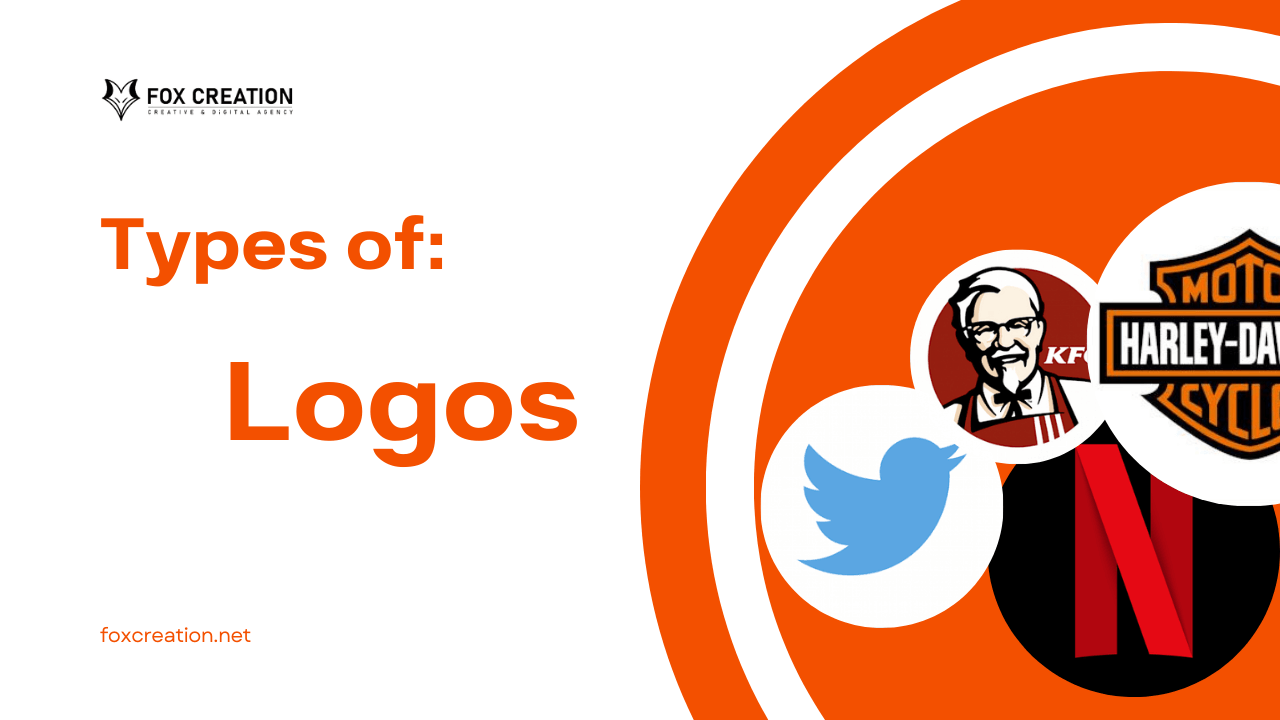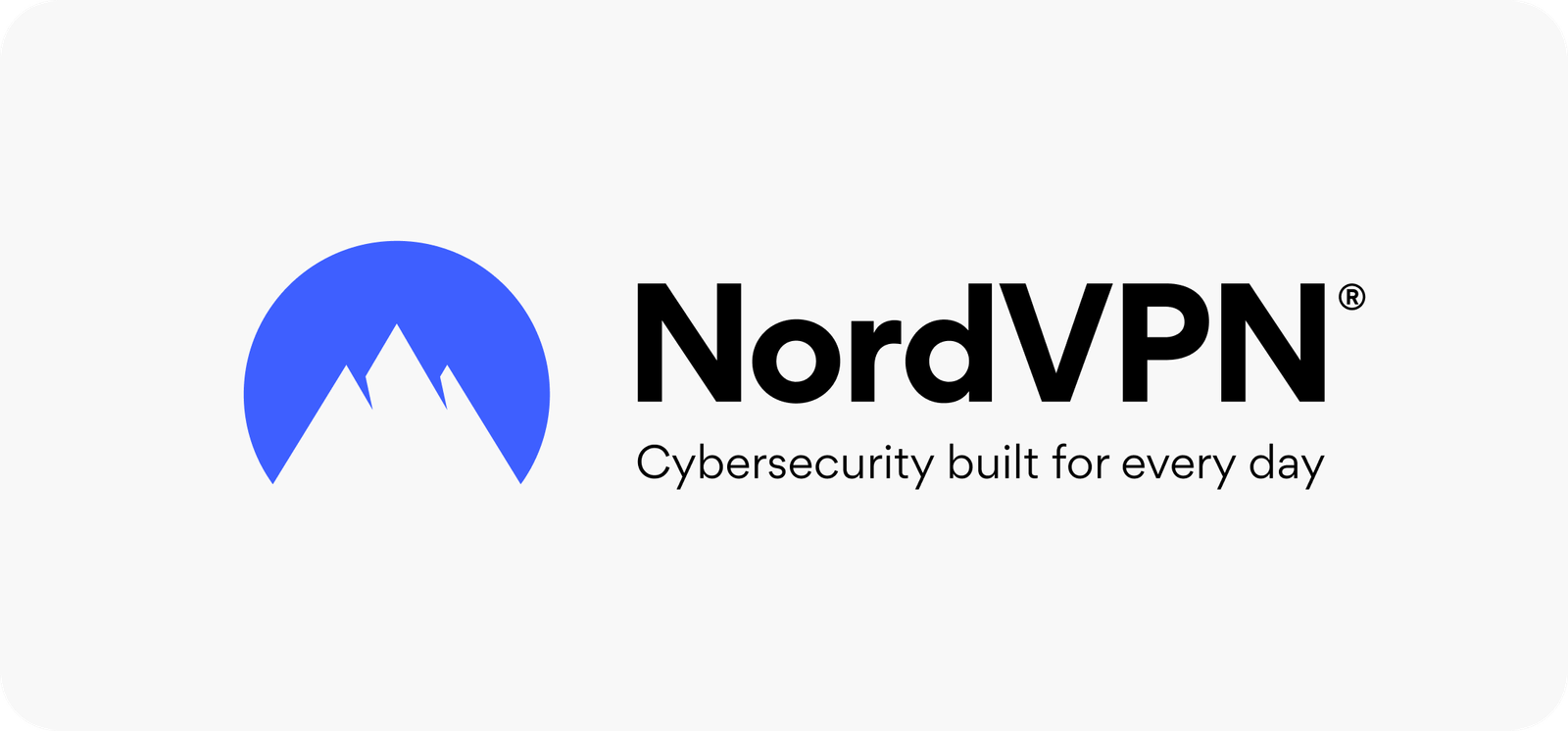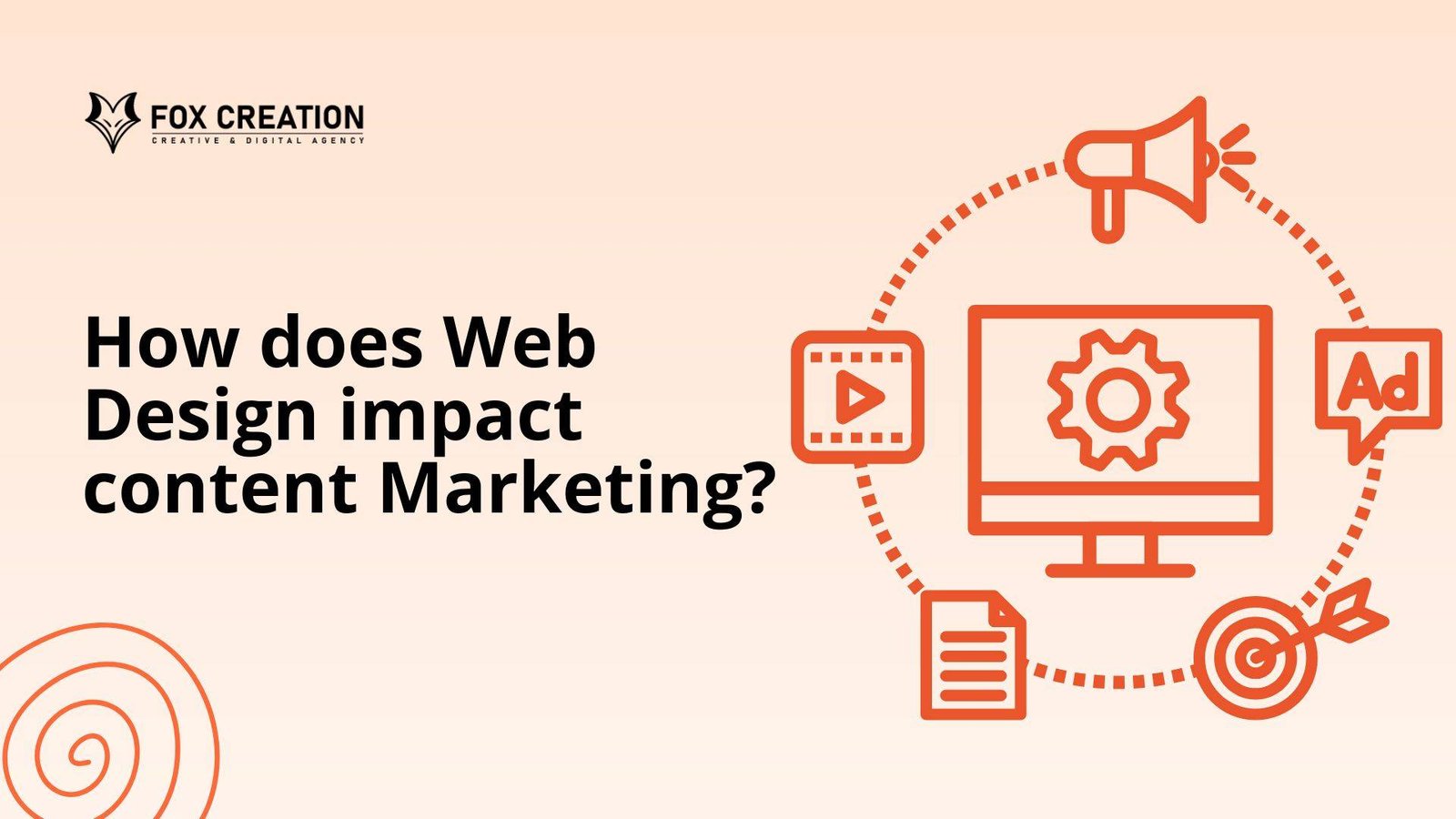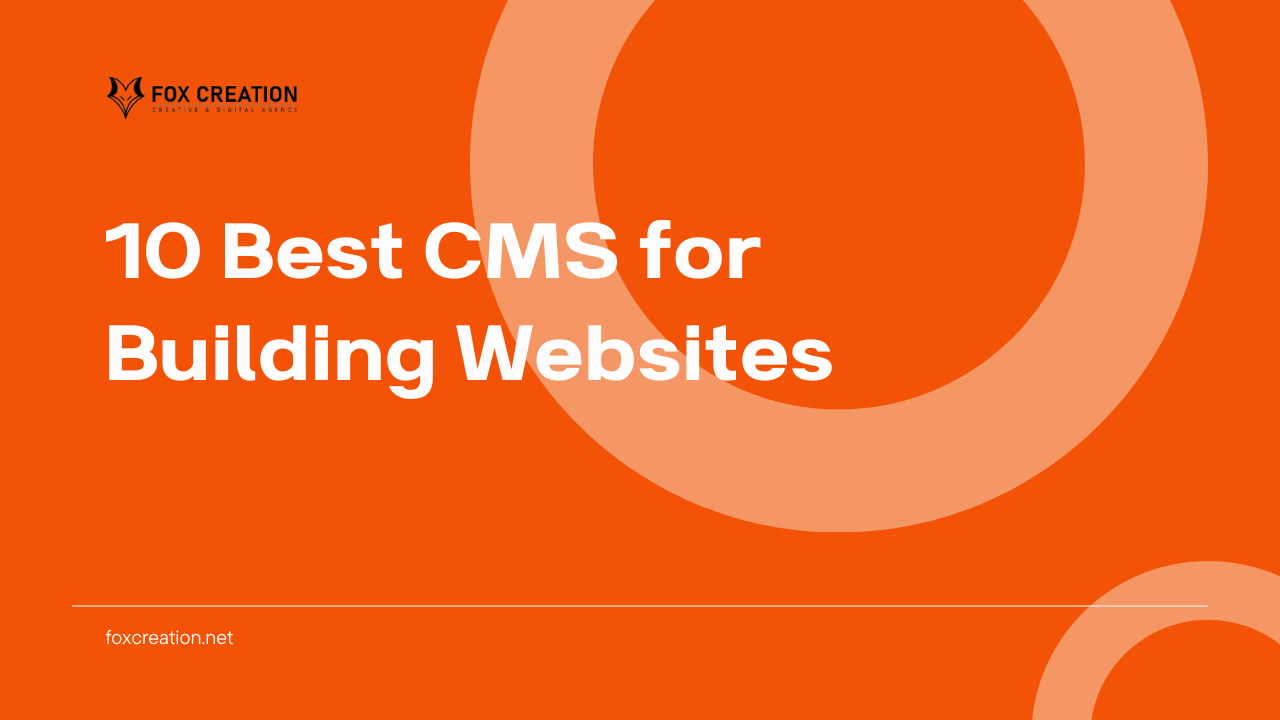Logos is an important asset for every business. They are used to represent a brand’s identity and differentiate it from its competitors. A good logo not only accurately reflects the brand and its character, but is also memorable and works well in a variety of contexts.
When you create a logo, consider different forms of logo design. From single visual symbols to plain text or a combination of both, here are nine different types of logos you’ll find, plus tips on how to use them to create winning designs.
Wordmarks/logotypes
Wordmarks (aka logotypes) consist of a company name written in a specific typeface or font. To successfully learn how to design a logo, you need to pay extra attention to every little detail.
If you want a wordmark—or a text logo, here are some routes you can take. Some brands create custom typefaces specifically for their logos, such as Coca-Cola. However, this takes time and requires the skills of a professional designer as well as commitment to a lengthy graphic design process. Alternatively, you can choose a logo font that reflects your brand impression. Modern logo designs, for example, generally use sleek sans serif fonts, while trendy logo designs may require more complex typography.
Consider whether to use all caps, lowercase, or mixed letters, as well as adding special characters or colors to your logo.
When to use wordmark and logotype logos:
A wordmark is a great choice for brands with catchy names or those who want to get their name out into the world, as their logo will appear throughout all their communication and marketing materials.
Examples: Wix, Coca-Cola, Subway, Casper, Kellogg’s, eBay and West Elm.

Letterforms
The letterform is a one-letter logo that only includes the first letter of the company name. Often, brands have an additional version of their logo consisting of their full business name (called a wordmark or logotype, as explained above), for use on various occasions.
Because the logo design is in small letters, it is easy to scale. Even when used in very small dimensions, they may still be recognizable, especially if they have a fairly simple design without too many details. This makes it ideal for app icons, favicon, social media profile images, and more.
When to use letterform logos:
In general, letterform logos are a good choice for brands that are already well-known. Otherwise, it will be difficult for people to know and remember your company name. They are also useful for brands with long names. They can also be used by large companies, with a lot of visibility as part of a rebranding effort. And if you are a brand that believes in minimalism, this is also a good choice.
Examples: Facebook, McDonald’s, Netflix and Pinterest, Uber and Beats.

Lettermarks/monogram logos
A letter mark (aka monogram logo) is a typographic logo consisting of a brand’s initials. In most cases, brands that have a monogram logo are referred to by their abbreviated versions when speaking, such as IBM and NASA.
Similar to the logo types mentioned above, lettermarks can also be created using custom typefaces, or by finding a font that successfully conveys your brand identity. Be sure to consider various typographic parameters, such as kerning (spacing between letters), width, weight, and style (such as bold or italic).
When to use lettermarks:
Lettermarks are also a common choice for brands with long names that want to be more impressive with their shortened versions. Think about your target audience and their need for a short version that they will remember. Just make sure you get feedback on your abbreviations, to make sure they make sense and you don’t accidentally spell something inappropriate.
Examples: HBO, IBM, NASA, CNN, HP and Louis Vuitton

Symbols/brand marks/pictorial marks Logos
A logo symbol (aka brand mark or pictorial mark) is a graphic icon, symbol, or image that reflects a brand’s identity or activities. Usually, this type of logo represents an object from the real world. Some of the best logos that use symbols are the ones that make you know the brand as soon as you see them.
If you decide to use a graphic sign, consider what it will symbolize for your brand. Do you want it to be a literal representation of your name, like Apple? It can also be used to subtly suggest your brand’s values or message. Notice, for example, how the Twitter bird faces upwards, symbolizing hope and freedom.
Finding the perfect image for your logo symbol can be a challenge, especially if your brand is fairly new. Not only do you tend to grow, change, and add new products over time, but it also takes time for customers to recognize your logo and associate it with your brand. In this case, consider including your name in the logo
In addition to making sure you choose a symbol that evolves along with your brand, an important logo design tip is to ensure that your design will be timeless. While you may be tempted to design a graphic logo that is trendy and ‘of the moment’, you certainly don’t want to create a new logo a few months later to stay up to date.
When to use logo symbols/brand marks/pictorial marks:
These logos are a good choice for companies that want to create a logo that is visually appealing and easy to remember. Logo symbols can also be easily recognized and understood by people from all cultures. Another advantage of using this type of logo is that it helps set a strong tone of voice. Once your company has gained recognition, a well-designed logo symbol can be very memorable.
Examples: Shell, Apple, Twitter, Target, Instagram and Snapchat, Major League Baseball

Abstract logo marks
This is an image-based logo that uses abstract shapes to reflect company branding. In contrast to pictorial signs that represent real objects, abstract logo signs are more metaphorical.
Because they don’t depict a specific, recognizable object, abstract logomarks give you the opportunity to create something truly unique. If you choose this type of logo, pinpoint your brand’s core values. Experiment by reflecting it in simple geometric shapes that will evoke the right emotions and messages. For example, apart from looking like the letter ‘A’, the Airbnb logo reminds us of the familiar ‘location’ icon and is an abstract shape of an upside-down heart.
When to use abstract logo marks:
If you decide to create this type of logo, make sure you have solidified your brand identity and know exactly what you want to convey to your audience. Additionally, abstract logo marks can be a good choice for global brands whose names don’t translate well across languages.
Examples: Airbnb, Chanel, Nike, Olympics, Google Drive, Adidas and Pepsi.

Mascots Logos
A mascot logo consists of a pictorial character that acts as a visual representation or “ambassador” for a brand. They can be anything from fictional creatures to real people, as long as they reflect the brand identity.
Mascots can be a good way to get customers to connect with your brand, as people tend to naturally like humans or other characters. You can also use a mascot to create a fun and exciting atmosphere that will attract your audience. Consider whether your business is suited to having a mascot and if so, how you can use it to convey the right message.
When to use mascots:
Due to their friendly and engaging nature, mascots can work well when designing social media and marketing campaigns. They also work well with animations and other motion effects. However, note that they often consist of more details than a standard logo, so they may require a simplified version for small dimensions, such as a favicon or business card.
Examples: Michelin Man by Michelin, Colonel Sanders by KFC, Cap’n Crunch, Tony the Tiger by Kellogg’s and Mr. Peanuts by Planters.

Emblems Logos
Emblems, also known as badge logos, are usually reminiscent of coats of arms. They combine text and symbolic images to form ornate designs with a traditional feel.
If you’re considering whether an emblem is right for your brand, think about the industry you’re in. Although there are no rules, this type of logo is very popular among universities, sports teams, and coffee brands. The current logo trend is for a contemporary look at the emblem, opting for a more minimal approach, which usually involves vector illustrations and clean lines.
When to use emblems:
Emblems can also give you the space you need to add a slogan that reflects your brand message. When creating an emblem, keep in mind that due to its intricate details, this type of logo is less versatile and does not always work well on a smaller scale. In those cases, you can create a simpler alternative.
Examples: Starbucks, Stella Artois, Harley-Davidson, NFL, Warner Brothers, Manchester United.

Combination Marks Logos
This type of logo combines images with words. For example, a combination logo can consist of an icon with a wordmark, or a mascot with letter shapes, and so on. Some brands have one main logo in the form of a combination mark, and occasionally separate text and images to better suit various contexts.
Combination brands are very popular among brands from all industries, because they are so versatile. You can create a number of variations of your logo and use them for different purposes, while ensuring a clear and cohesive visual language overall. For example, notice how Lacoste uses a combination mark on their website design, while most of their products only feature the much-loved and recognizable green crocodile.
When to use combination marks:
For companies that are not yet well known, combination marks can be a good starting point, helping you build brand recognition. As time goes by, you will have the freedom to use just text or icons, but still make them recognizable. Additionally, supporting text with icons, symbols, and other forms of images helps potential customers understand what your brand is about.
Examples: Taco Bell, Toblerone, Dropbox, CVS, Dove and NBC

Source:






